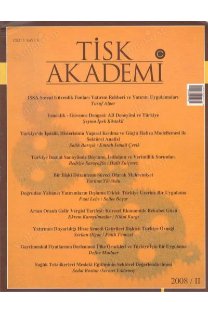Carry Trade: Gelişmeler ve Riskler
Son yıllarda, uluslararası finansal piyasalarda önemli dönüşüm süreci yaşanmaktadır. Yaşanmakta olan bu dönüşüm sürecinde, yatırım araçları yelpazesi, futures, opsiyon gibi çeşitli türev araçları içine alacak şekilde genişlemiştir. Bu genişleyen yelpazede yer alan yeni yatırım stratejilerinden ‘carry trade’ faiz farklarından doğan arbitraj imkanından yararlanılarak, düşük faizle ve görece zayıf para birimi cinsinden borçlanma ve görece kuvvetli para birimi cinsinden yüksek faiz getiren yatırım araçlarına yönelmeyi ifade eder. Karşılanmamış faiz paritesi teorisinin pratikte işlemeyişinin finansal piyasalara yansıması olan carry trade stratejisi, artan küresel likidite, gelişmiş ülkeler arasında görülen faiz farkları ve azalan kur belirsizliği ile giderek yaygın hale gelmiştir. Ancak, gelişmekte olan ülkeler çerçevesinde incelendiğinde, carry trade stratejisinin büyük oranda içsel dinamiklerden etkilendiği ve Türkiye özelinde, 2007 yılındaki politik gelişmelerin ve enşasyon hedeşemesi rejiminin göstereceği performansın, carry trade işlemlerini belirlemede dış koşullara oranla daha baskın olacağı beklenmektedir. Bununla beraber, çalışma Türkiye’ye ilişkin söz konusu işlemlerde olumsuz bir gelişme, diğer bir deyişle yabancı fon akışını tersine çevirebilecek bir dış şok beklenmediğini göstermektedir.
Carry Trade: Developments and Risks
International financial markets have lately been exposed to a process of transformation. During this transformation process, the range of investment instruments have expanded to include new financial derivatives like futures and options. Among these instruments, a new investment strategy called ‘carry trade’ represents an arbitrage oppurtunities that implies investing in a high-yielding strong currency denominated asset by borrowing at a low interest rate and in a relatively weaker currency denomination. Carry trade strategy, which is the financial outcome of the failure of the uncovered interest rate parity theory in practice, has been ever more popular due to increasing global liquidity, interest rate differentials between developed countries and lower exchange rate uncertainty. However, in a developing economy context, carry trade is mainly influenced by internal dynamics. More specifically, in the Turkish economy framework, the political developments ahead and the performance of the full-fledged inflation targeting program in the upcoming year other than the external environment are likely to be the main determinants of the direction of foreign funds regarding with the carry trade. Additionally, the study shows that an external shock that is likely to reverse the flow of capital is not expected.
___
- Bank of Japan, 18 Ocak 2007 tarihli Para Politikası Kurulu toplantı notları.
- Çulha, A. (2006), A Structural VAR Analysis of the Determinants of Capital Şows Into Turkey, TCMB, Araştırma ve Para Politikası Genel Müdürlüğü, Çalışma Tebliği, No. 06/05.
- ECB (2006), Jean-Claude Trichet’nin 20 Aralı k 2006 tarihinde Avrupa Parlamentosu’nda yapmış olduğu konuşma.
- Fama, E.F. (2004), “Forward and Spot Exchange Rates, Journal of Monetary Economics”, cilt. 14, sayı.3, sf. 319-38.
- Galati, G., M. Melvin (2004), Why Has FX Trading Surged? Explaining the 2004 Triennial Survey, BIS Quarterly Review, (December), sf. 67-98.
- Goldstein, M. (2005), What Might the Next Emerging-Market Financial Crisis Look Like, Institute of International Economics Working Paper No. 05-7.
- McGuire, P., N. Tarashev (2006), The International Banking Markets, BIS Quarterly Review, (June), sf. 11-25.
- Obstfeld, M., K. Rogoff (2004), The Unsustainable US Current Account Position Revisited, NBER Working Paper No. 10869.
- Pesek, W. (2006), Japan’s Boom May Explode Yen-Carry Trade, www.bloomberg.com, 21.02.2006
- Stuart, E. (2006), “What is the carry trade?”, www.moneyweek.com, 03.03.2006.
- www.bcb.gov.br
- www.rba.gov.au
- ISSN: 1306-6757
- Yayın Aralığı: Yılda 2 Sayı
- Başlangıç: 2006
- Yayıncı: Türkiye Isveren Sendikalari Konfederasyonu
Sayıdaki Diğer Makaleler
İşyerinde Psikolojik Taciz (Mobbing) ve Hukuki Sonuçları
Türkiye'de Uluslararası Sermaye Hareketleri Faiz İlişkisi: (1992-2005 Dönemi VAR Analizi)
Eşitlik Kurumu: Bir Alternatif Uyuşmazlık Çözüm Modeli
Türkiye'de Çocuk ve Yoksulluğu: Ölçüm Yöntemleri ve Yoksulluğun Belirleyicileri
Türkiye'de İkiz Açıklar Hipotezi: 1989-2005
Reklam Planlaması ve Etkinliğinin Ölçülmesi Üzerine Bir İnceleme
